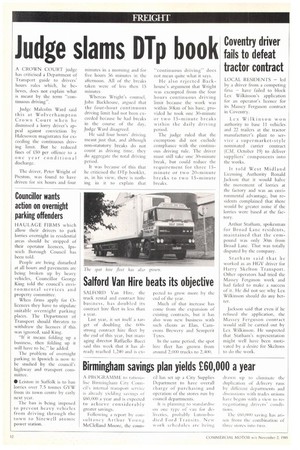A CROWN COURT judge has criticised a Department of Transport
Page 14

If you've noticed an error in this article please click here to report it so we can fix it.
guide to drivers' hours rules which, he believes, does not explain what is meant by the term "continuous driving".
Judge Malcolm Ward said this at Wolverhampton Crown Court when he dismissed a lorry driver's appeal against conviction by Halesowen magistrates for exceeding the continuous driving limit. But he reduced fines of i:50 per offence to a one year conditional discharge.
The driver, Peter Wright of Preston, was found to have driven for six hours and four minutes in a morning and for five hours 56 minutes in the afternoon. All of the breaks taken were of less then 15 minutes Whereas Wright's counsel, John Backhouse, argued that the four-hour continuous driving limit had not been exceeded because he had breaks in the course of the day, Judge Ward disagreed.
He said four hours driving meant just that, and although non-statutory breaks do not count as driving time, they do aggregate the total driving period.
It was because of this that he criticised the DTp booklet, as, in his view, there is nothing in it to explain that "continuous driving" does not mean quite what it says.
He also rejected Backhouse's argument that Wright was exempted from the four hours continuous driving limit because the work was within 50km of his base, provided he took one 30-minute or two 15-minute breaks within the daily driving period.
The judge ruled that the exemption did not exclude compliance with the C0116111.1OILS driving rule. The driver must still take one 34)-minute break, but could reduce the requirement for three 15minute or two 20-minute breaks to two 15-minute breaks.












































































































